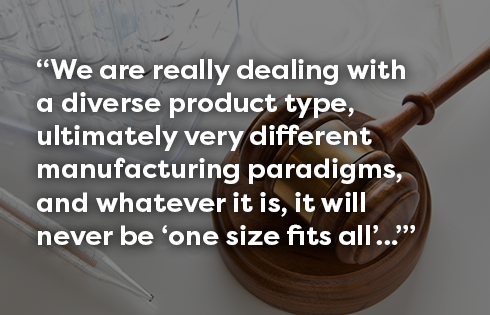Defining standards for cell and gene therapy products

As part of Cell and Gene Therapy Manufacturing Digital Week, Sheng Lin-Gibson, Chief of Biosystems and Biomaterials Division at National Institute of Standards & Technology (NIST), provided a comprehensive break-down of the efforts made so far in standardizing the manufacture and testing of cell and gene therapeutic products. Here, we revisit some of the highlights from the presentation. Watch the full webinar presentation, as well as seven other on-demand webinars, here.
“Standards are critical to advance the development and translation of cell and gene therapy products. In particular, many different types of standards (including standard practice, terminology, requirement, and reference material) serve different purposes that collectively accelerate innovation and facilitate product approval.
Several Standards Developing Organizations (SDOs) as well as non-consensus standard development bodies are working toward standards that address unique challenges associated with cell and gene therapy manufacturing and testing.”
Lin-Gibson starts off with a rough guide to the organizations involved in developing standards across advanced therapies, each of their areas of focus and how they collaborate with one another. Here, she lists the individual bodies developing standards across cell and gene therapies, who are coordinated by NIST in partnership with SCB and the FDA.
Moving on, Lin-Gibson describes the steps that the regulators take to approach creating standards for the diverse product portfolio of next generation therapies. “We are really dealing with a diverse product type, ultimately very different manufacturing paradigms, and whatever it is, it will never be ‘one size fits all’, and this is something we need to keep in mind when we think about standards.”
Finding the required standards for cell and gene therapies
The first step to standardizing cell and gene therapies, she explains, is identifying similar products already established in the biopharmaceutical industry, such as medical devices and biologics, and evaluating how they are regulated.
The next stage is approaching the uniqueness of cell and gene therapeutic products. It is here where Lin-Gibson notes that coordination and cross-referencing is done to avoid conflict and duplication across the different varieties of product manufacturing. As she illustrates, each stage in the timeline of manufacturing and testing is noted to identify which type of processes where standards are required.
So, what are the types of standards needed to specifically accelerate the R&D, product translation and commercialization of cell and gene therapies? Lin-Gibson takes us through the categories of standards for:
- Common understanding
- Common practices, procedure and methods
- Common requirements
- Common operational and management systems
- Reference materials
Regulating cell and gene manufacturing
Lin-Gibson demonstrates the process of identifying the specific standards needed in cell and gene therapy manufacturing, breaking down the elements in manufacturing of a cellular therapeutic product and what needs to be controlled, such as:
- Ancillary materials
- Labelling
- Equipment
- Chain of custody/identity
- Processing / preprocessing - transportation / freeze/thaw
- Manufacturability
Building standards for characterization and analysis
Moving on to product testing and development, Lin-Gibson describes how categories of Critical Quality Attributes are identified to develop standards for analytical assays linked to them. Within each characterization, we begin with an ‘umbrella’ standard to enable a common understanding and best practices for designing assays. From there, the process drills deeper into developing standards for designing assays by:
- Attribute - such as cell counting and cell line authentication
- Technique - such as NGS and Flow Cytometry
- Materials - including oligonucleotides and MSC
Throughout this, she reveals key standards currently under development or consideration within these areas.
RELATED ARTICLE: Key regulatory considerations around cell and gene therapies - WHITEPAPER
